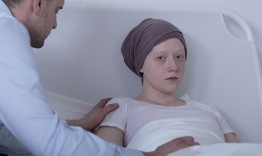
Identifying molecular abnormalities in childhood leukaemia to improve treatment
Funding: Woolworths Research Fellowship
(2012–2015)
Researcher: Dr Mark N Cruickshank
Dr Cruickshank has been employed within the CLCRF Laboratory in the Division of Cancer and Leukaemia Research since 2012, and was awarded the Woolworths CLCRF Research Fellowship. This Fellowship has enabled Dr Cruickshank to conduct research aimed at (1) identifying novel drugs for the treatment of high-risk infant leukaemia patients and (2) genetic mechanisms underpinning disease.
Dr Cruickshank has also continued researching genetic determinants of paediatric leukaemia and drug resistance. As part of his Fellowship, Dr Cruickshank has been involved in experimental design, data analysis and manuscript preparation for projects on infant ALL and childhood ALL, detailed under the CLCRF Triennial Block Grant. The long-term vision of these research aims are toward detection of genetic biomarkers that are predictive of drug responses, thus empowering clinicians with new molecular prognostic tests and novel drugs, to design personalised therapies to cure this disease.
While many types of childhood leukaemia have shown remarkable improvements in patient survival (now up to 95%) over the last twenty years, infant leukaemia remains challenging to treat with low survival (~30%) of the very young patients and significant morbidity for survivors. Our drug screening studies have utilised patient specimens and cell lines grown in test tubes derived from these leukaemia samples. In collaboration with the Children’s Cancer Institute Australia, we have interrogated the efficacy of over 150 novel drugs including FDA-approved cancer chemotherapies and additional “targeted” therapeutics that are currently in clinical trials for biologically related cancer sub-types.
These drugs represent the “next-generation” of therapeutics that are designed to target vulnerabilities specific to cancer and therefore are less toxic against normal cells with reduced patient side effects. In addition, we have examined the interaction of selected novel drugs and current backbone therapies. Indeed, any novel drugs that are progressed to the clinic are likely to be introduced in such combinations. We have identified specific drug combinations that function synergistically, but have also identified drug combinations that, in some patients, show adverse interactions. Therefore, we have been able to demonstrate that some drug combinations are consistently effective in killing infant leukaemia cells, while other drug combinations interact adversely to reduce their efficacy in some patient leukaemia cells. These results have been presented to members of the Children’s Oncology Group for consideration of therapies to be included in clinical trials.
Our genetic characterisation of infant leukaemia has utilised state-of-the art “genomic” technologies, providing comprehensive characterisation of genetic differences specific to infant leukaemia patients. Indeed, the genetic cause of infant leukaemia has remained elusive, even though genomic sequencing technologies has identified many genes driving paediatric and adult cancers. Dr Cruickshank has been testing the hypothesis that inherited gene mutations from both parents are necessary to drive disease, even though these gene mutations do not cause disease in each of the parents. Moreover, these gene mutations are found in both the leukaemia cells as well as healthy cells of the patient. We have identified an increased number of “defective” genes in infants with leukaemia compared to healthy individuals. Indeed, among the “defective” genes found in infant leukaemia patients, many are known to act as cancer driver genes in paediatric and adult cancer patients.
The unique resources, including patient specimens and cell lines generated within the CLCRF Laboratory, are also being used to identify specific genes that are altered in infant and childhood leukaemia and which may confer resistance to conventional therapies. These studies have identified potential ‘biomarkers’ that could predict drug sensitivity or drug resistance. The ‘biomarkers’ under investigation include gene mutations, and alterations in chromosomes and levels of gene-expression.
Dr Cruickshank’s work on paediatric leukaemia has identified a class of enzymes that may be involved in resistance to the drug flavopiridol. Using leukaemia cells selected for drug resistance, “genomic” analyses identified mutated genes that encode enzymes that process flavopiridol. Furthermore, analysis of gene expression induced by flavopiridol, identified enzymes involved in neutralising and eliminating drugs that were activated after drug treatment. Taken together, these results have defined genes that may represent ‘biomarkers’ of drug resistance and targets for therapy in drug-resistant leukaemia.
Similar Project
Therapy & molecular genetics of leukaemia in infants
Funding: Triennial Block Grant
(2012–2015)
Researcher: Professor Ursula R Kees
Molecular genetics of childhood tumours
Funding: Million Dollar Recognition Award
(2012–2017)
Researcher: Professor Ursula R Kees
Targeting therapy & disease outcomes in paediatric cancer
Funding: CLCRF Research Fellowship
(2010–013; 2013–2016)
Researcher: Associate Professor Alex H Beesley
Effective therapies for NUT midline carcinoma
Funding: CLCRF Project Grant
(Jan 2014–Dec 2014)
Researcher: Associate Professor Alex H Beesley




